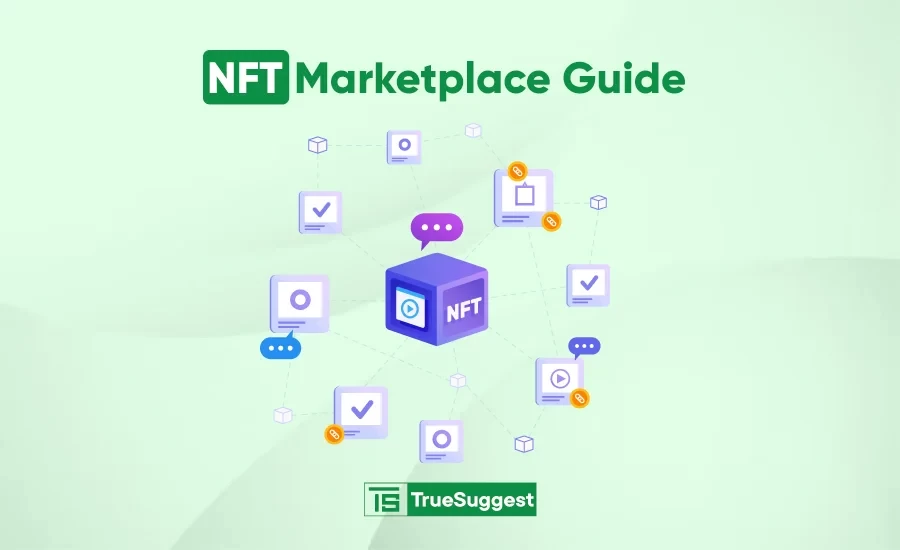What is Non-Fungible Token?

What does NFT stand for? NFT stands for a non-fungible token. NFT is a type of digital asset. This digital asset represents ownership of the authenticity of a unique item. It is also often stored on a blockchain. Unlike cryptocurrencies such as Bitcoin or Ethereum can be exchanged on a one-to-one basis. NFTs are unique and each NFT has distinct attributes that make it distinct from any other NFT. NFT can be used to represent ownership of digital art, collectibles, virtual real estate, and other digital or physical items.
What is Non-Fungible Token?
A non-fungible token (NFT) represents ownership of a specific item or piece of content. What does non-fungible mean? Non-fungible means a unique item and cannot be replaced with something else of equal value. Each non-fungible item has distinct characteristics. This makes it unique, unlike fungible items that are interchangeable and have equal value.
An NFT aims to provide verifiable ownership and proof of authenticity for unique digital assets, leveraging blockchain technology to ensure scarcity, provenance, and security. There are different types of nonfungible tokens (Render, Theta, Sandbox, Gala, etc.). These are used to purchase unique assets.
How Does NFT Work?
Non-fungible tokens (NFTs) are unique digital assets. It uses blockchain technology to certify ownership and authenticity. However, Non-fungible tokens (NFTs) function through blockchain technology, providing a means to verify the ownership and authenticity of digital assets. Let’s see the detailed with step by step on how NFT or non-fungible tokens work.
1. Creation (Minting)
NFTs are created through a process called minting. This involves converting digital files (like artwork, music, videos, etc.) into a digital asset on a blockchain. Popular platforms for minting NFTs include Ethereum, Binance Smart Chain, and others that support smart contracts.
2. Smart Contracts
It is a self-executing contract with the terms of the agreement. It is directly written into code. When an NFT is minted, a smart contract is created, defining the properties and rules of the NFT. This can include information such as the creator's identity, the NFT's uniqueness, and any royalties the creator will earn on future sales.
3. Blockchain Ledger
Once minted, the NFT is recorded on a blockchain, a decentralized ledger that securely tracks ownership and transaction history. This ledger is immutable, meaning it cannot be altered, providing a transparent and tamper-proof record of the NFT's provenance.
4. Ownership and Transfer
Ownership of an NFT is represented by a unique token ID linked to the blockchain address of the owner. NFTs can be bought, sold, or traded on various marketplaces such as OpenSea, Rarible, and Foundation. Transactions are conducted using cryptocurrency, with the blockchain recording the transfer of ownership from the seller to the buyer.
5. Digital Wallets
To store and manage NFTs, users need a digital wallet compatible with the blockchain on which the NFT is minted. Wallets like MetaMask, Trust Wallet, and Coinbase Wallet are commonly used for this purpose.
6. Interoperability
NFTs can be used across different platforms and applications thanks to standards like ERC-721 and ERC-1155 on Ethereum. These standards ensure that NFTs can be recognized and interacted with by various applications.
NFTs leverage blockchain technology and smart contracts to create, verify, and trade unique digital assets securely and transparently. This innovation allows artists and creators to monetize their digital works while providing collectors with verifiable ownership.
What Exactly Does An NFT Do?
An NFT transforms digital ownership by embedding unique identifiers within a blockchain. This uniqueness allows creators to authenticate their work, retain royalties on secondary sales, and provide buyers with indisputable proof of authenticity and ownership. NFTs enable the creation of a digital economy where digital assets can be traded, collected, and monetized. It also ensures the better security and transparency of blockchain technology.
Benefits of Non-Fungible Tokens
Non-fungible tokens offer several benefits across various industries, like digital art, entertainment, gaming, and real estate. Have a look at some key benefits within its numerous benefits.
- NFTs provide verifiable ownership and a clear provenance record so that buyers can trace the history of an asset back to its original creator.
- Artists and creators can monetize their digital works directly. It means NFTs ensure that creators receive a percentage of sales each time the NFT is resold.
- NFTs allow for the fractional ownership of high-value assets such as real estate, rare collectibles, or expensive artworks.
- NFTs can be used to offer exclusive content, experiences, or merchandise to fans in the entertainment industry to generate new revenue streams.
- NFTs can be used across different platforms and applications (ERC-721 and ERC-1155) to enhance the utility and versatility of NFTs.
- Blockchain technology ensures that NFTs are secure, transparent, and immutable.
- NFTs open up global markets for artists, creators, and collectors. Digital assets can be bought, sold, and traded on various online platforms to a worldwide audience.
- NFTs help preserve digital culture and history, ensuring that significant digital creations are recognized and maintained over time.
Relation between Non-Fungible Token and Blockchain Technology
Non-fungible tokens (NFTs) and blockchain technology are intrinsically connected, with NFTs depending on blockchain for their functionality, security, and unique properties. Blockchain is a distributed ledger technology that records transactions across multiple computers in a secure, transparent, and immutable manner. Blockchain immutable ledger ensures the uniqueness, security, and transparency of NFTs.
Each NFT is minted on a blockchain. NFT embeds a unique identifier and metadata that distinguishes it from other tokens. The blockchain records the ownership and transaction history of each NFT. It provides verifiable proof of authenticity and provenance.
Smart contracts on the blockchain automate and enforce rules, such as royalties for creators on secondary sales. This standard environment allows NFTs to be traded and utilized across various platforms and applications, enhancing their utility and value in the digital economy.
Future of Non-Fungible Tokens
The future of NFTs is bright, with expanding use cases, technological advancements, and increasing mainstream acceptance. NFTs will likely become an integral part of the digital economy, transforming various industries and allowing new forms of value creation and exchange.
The future of non-fungible tokens (NFTs) holds significant promise and potential across various sectors and continued technological advancements and increasing adoption. Let’s see some key aspects of what the future may hold for NFTs
- Broader adoption and integration.
- Technological advancements.
- New use cases (gaming, real estate, and virtual worlds).
- Enhanced security and regulation.
- Environmental considerations.
- Cultural and social impact.
Final Thought
The non-fungible token is a digital and unique asset that is recorded on a blockchain. It ensures the authenticity, ownership, and provenance of the digital asset. This technology allows creators to monetize their work and provides buyers with verifiable proof of ownership and originality






























